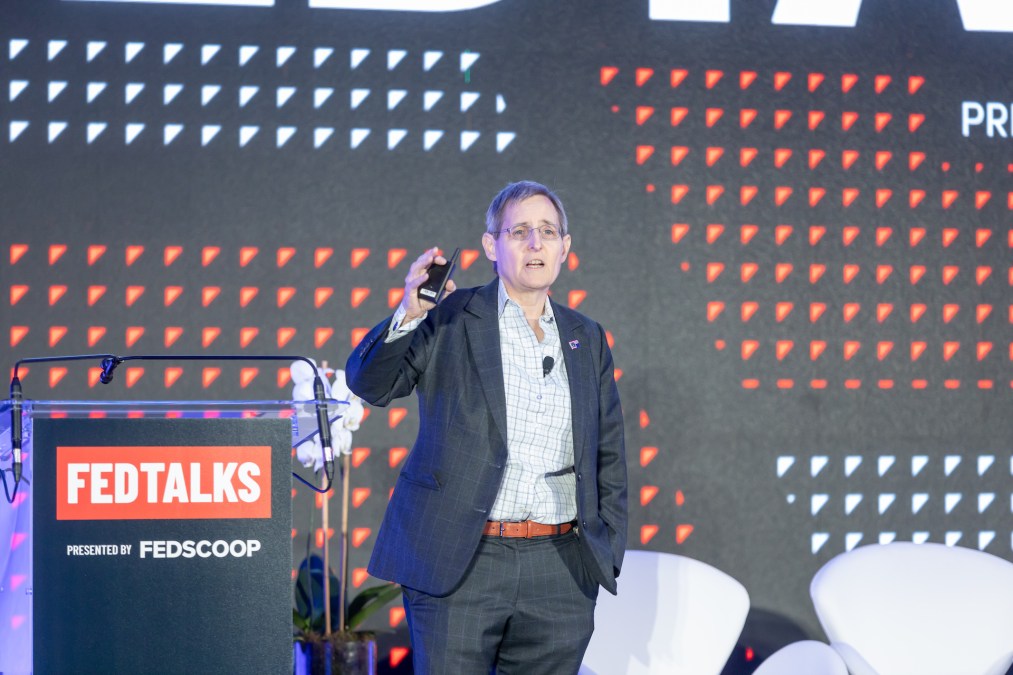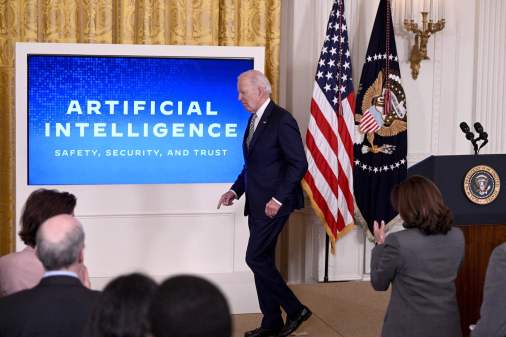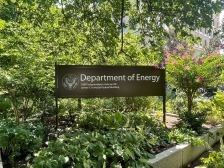Batteries, 5G, AI and the battle for spectrum: How DOE is adapting

For the Department of Energy, new technologies are playing a growing role in the agency’s myriad critical responsibilities, which range from overseeing the country’s network of national research labs to managing the Power Marketing Administrations that helps supply hydropower to more than half of U.S. states. The result? Much more complexity.
For example, artificial intelligence could impact a wide range of department operations, Energy CIO Ann Dunkin told FedScoop in a recent interview. The DOE, and particularly its national labs, are already studying the potential opportunities created by the technology, according to the agency’s updated AI inventory, which was published this summer.
At the same time, the Department is also planning a new user guide focused on generative AI and IT, as well as a “Discovery Zone” meant to help the agency evaluate the technology, as FedScoop reported last month.
“There’s gonna be a lot of other opportunities to help people — with writing, with automating processes and things like that — but I think we’re well away from really understanding what those things are going to be,” Dunkin told FedScoop. “If you look across the breadth of DOE, there’s probably very few technologies that don’t have an appropriate use somewhere.”
But it’s not just AI that’s impacting the agency. The DOE, which recently released its first enterprise-wide wireless strategy, also has its eyes on 5G and the growing demands for wireless spectrum, including from private industry. Meanwhile, the surge of internet-connected devices in home energy systems, like smart meters, is changing the cybersecurity needs of the grid. The arrival of new clean energy sources is having an impact, too.
“The reality is that our goal is to accelerate clean energy transition through [an] all-the-above strategy, which means hydropower, wind power, solar power, nuclear power, geothermal, all of those things,” Dunkin said. “There’s complexity that is increased dramatically by not only the number of resources on the grid, but also by the fact that these resources are consistently inconsistent.”
FedScoop chatted with Dunkin to learn more about how these emerging technologies are impacting DOE operations.
This interview has been edited for clarity and length.
FedScoop: Can you talk about your office and its role in overseeing the grid?
Ann Dunkin: From a DOE standpoint, we have four Power Marketing Administrations and they run the grid in 36 states. … That power is power that is generated by the Tennessee Valley Authority, the Army Corps of Engineers [and] the Bureau of Reclamation. We essentially take that power and we market that power in bulk and then manage the grid.
I’m responsible ultimately for cybersecurity and IT for all of DOE and that includes those four Power Marketing Administrations. So that’s my area of responsibility for the power sector.
FS: Particularly for those DOE-managed sources, what are the kinds of cybersecurity risks that you’re paying attention to?
AD: Fundamentally, they’re not different than other parts of our enterprise — but they’re different than some enterprises because they’re primarily about operational technology. Obviously, they have information technology risks as well, which are more traditional and probably more familiar, but they also have significant amounts of operational technology.
The grid is obviously heavily interconnected. You have the power generation facilities, you have the transmission operations facilities, the grid operators. You have the retail utilities, some of which also generate their own power in addition to power they may be buying from somebody else. And then you have all these customer devices on the grid.
If you look at what’s on the side of your house, there is more than likely a smart meter. … If you’ve got any power of your own — you might have solar panels and an inverter — you could have batteries. All of those things? Every single one of those items talks to something wirelessly.
So not only do we have the risks of small utilities, which are very resource-limited. We now have the risk of consumers who may or may not be resource-limited, but most of them aren’t very good at cybersecurity. Then you’ve got all these devices, which are connected to the internet. [They’re] all points at which there’s an opportunity for a bad actor to get into the grid. The risk of this massive interconnected network is absolutely increased, probably by an order of magnitude, by the number of new devices on that grid that we didn’t use to have, right?
FS: When you put some of these new energy sources on the grid, does that change anything from an IT perspective?
AD: From a technology standpoint, all that complexity has to be managed. You have to be able to manage switching, predicting — to some extent — and then being able to switch those resources. And those are all technology problems. You’ve got to also be able to see the generating capacity that’s available. There’s security issues with it. But the complexity of all those devices that have to be monitored and understood is substantial.
FS: Can you talk about the Advanced Wireless Strategy? How is 5G impacting your office?
AD: The Advanced Wireless Strategy was an outgrowth of a request from the White House to document everything DOE was doing in terms of 5G research. … Then we looked at that, and we said, we really need a strategy for DOE because we haven’t had one in the past.
What we’ve been doing since we created this strategy is we then look to see where there were gaps. So what are the projects? What’s the strategy? Where are the gaps?
Like many things from a spectrum standpoint, we have two jobs. One is we do research and testing in 5G and spectrum. For example, we have a huge range at a national lab [where] people aren’t allowed to use the spectrum around this part of the lab, so they’re able to do a lot of testing of 5G and other wireless devices and in capabilities out there.
But we also have some substantial operational concerns in spectrum — across all spectrum, not just in the 5G space. We have, particularly for the Power Marketing Administrations for grid operation, but also for other activities across our enterprise, we have significant equities in terms of having the appropriate spectrums available for DOE for our use.
FS: What are the biggest equities right now, for 5G spectrum, that you have your eyes on?
AD: There’s constant demands for spectrum from the private sector. … There are one-time uses where people reach out — where government entities or private sector entities would reach out to use a piece of spectrum — to do something or to do particular activity that might or might not interfere. And we vet those. But more generally, we need to make sure that the spectrum is available for DOE’s ongoing operations.
We’re actually still finishing up moving our Power Marketing Administrations out of some spectrum they were using that have been reallocated to the private sector. Industry in the United States wants spectrum — for good reason, they want to expand the capabilities and the services they deliver to their customers. Unfortunately, the same spectrum that industry is interested in also tends to be the spectrum that the government is occupying. Because it’s useful spectrum.
We have to work together to find ways, in some cases, to share spectrum. But we also have some very, very high availability needs, right? Power grid timing is spectrum-use dependent. It’s dependent upon not having an interfering user on that spectrum.






